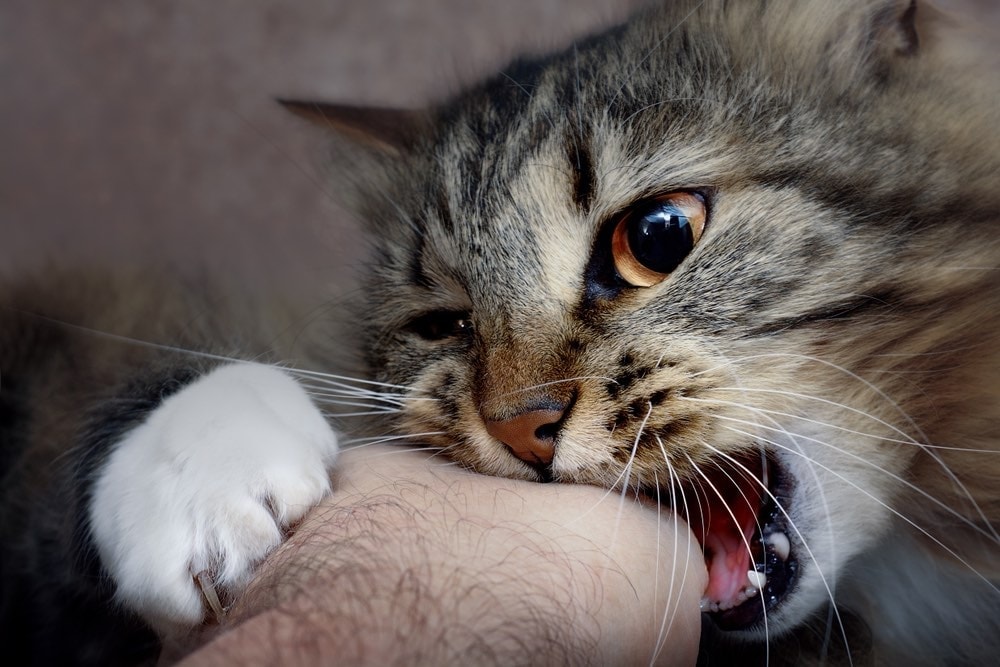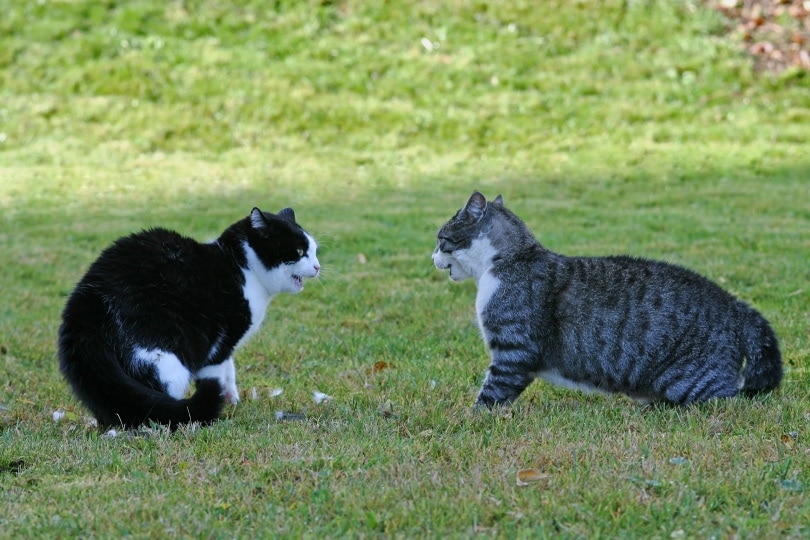Toyger vs Bengal: Differences Explained (With Pictures)

Updated on
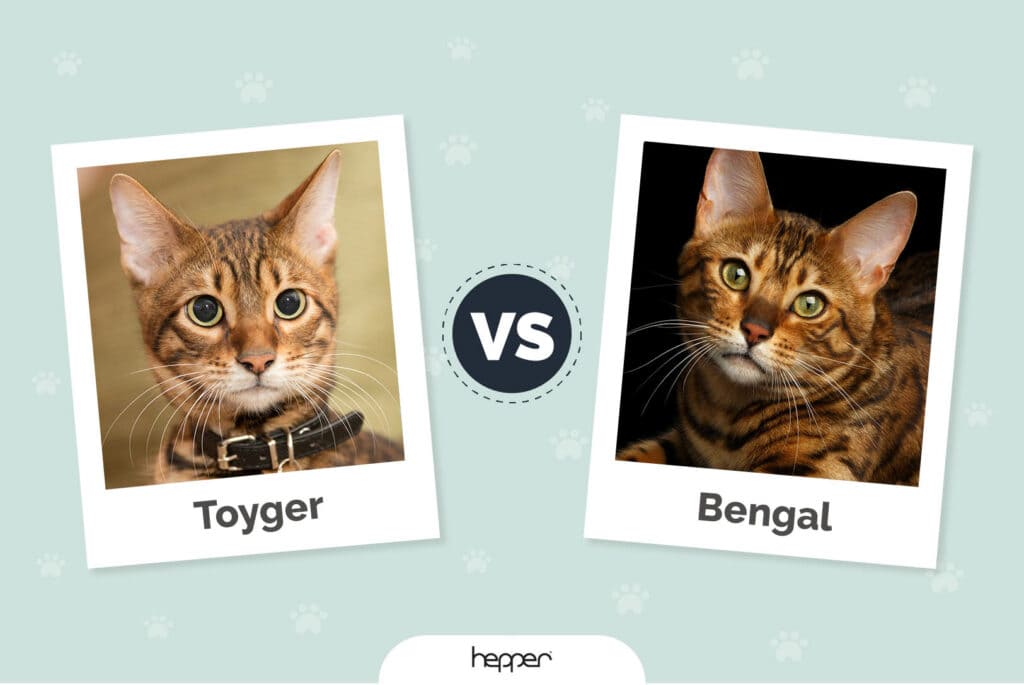
Click to Skip Ahead
The feline world is fascinating and full of various breeds, each with its unique characteristics. Among them, Toyger and Bengal cats are two breeds that often stir curiosity.
Though they may appear quite similar, especially to the untrained eye, the differences between them are more than “fur deep”. Let’s explore these two captivating breeds and unravel the mysteries that distinguish them.
Visual Differences

At a Glance
- Average height (adult): 9–13 inches
- Average weight (adult): 7–15 pounds
- Lifespan: 10–15 years
- Exercise: Not required
- Grooming needs: Moderate
- Family-friendly: Yes
- Other pet-friendly: Yes
- Trainability: Smart, loyal, quick learners
- Average height (adult): 13–16 inches
- Average weight (adult): 8–15 pounds
- Lifespan: 12–16 years
- Exercise: 30 minutes a day
- Grooming needs: Moderate
- Family-friendly: Yes
- Other pet-friendly: Generally
- Trainability: Independent, stubborn, intelligent
Toyger Overview
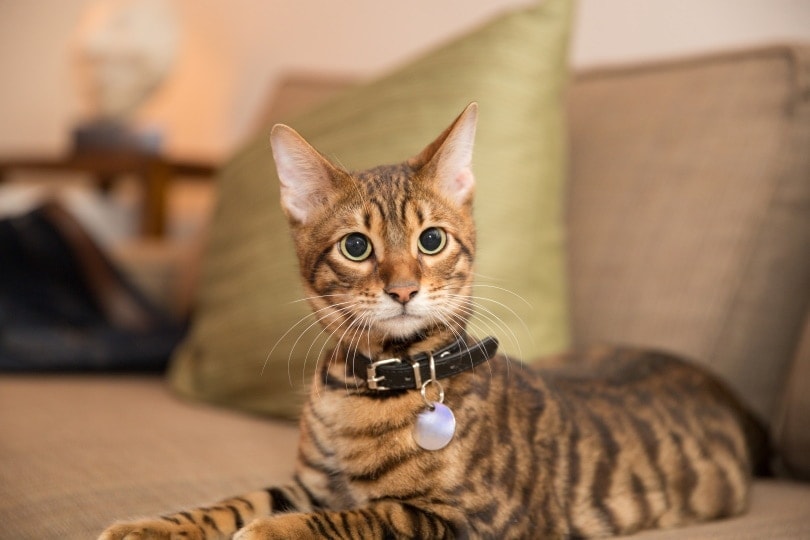
Personality / Character
The Toyger cat has a personality that complements its tiger-like appearance. Fearless and athletic, these felines are far from the timid house cats some may expect. They are ready to pounce into action and adventure but also have a tender side.
Affectionate with family members, vocal in expressing their needs, and playfully engaged, Toygers are a lively addition to any household. What’s more, they won’t just curl up on the couch; they’re often eager to play games and interact with their human counterparts.
Health & Care
When it comes to grooming and general care, Toygers are not a high-maintenance breed. Their short, thick coat requires only regular brushing to help manage shedding and keep their stripes looking sharp. This can also be a lovely bonding experience, as these cats often enjoy the attention.
Health-wise, they’re generally a robust breed but do keep an eye on typical feline health issues like obesity and dental care. Regular veterinary check ups will ensure your Toyger stays in tip-top shape.
Breeding
The Toyger’s unique appearance and personality don’t just happen by accident. Originating in the 1980s, the breed was carefully developed by crossing a striped domestic shorthair cat with a Bengal.
This intriguing crossbreed was designed to capture the essence of a wild tiger in a package that fits comfortably on your lap. Judy Sugden, the original breeder, worked to enhance the breed’s physical characteristics and temperament, making them both beautiful and engaging pets.
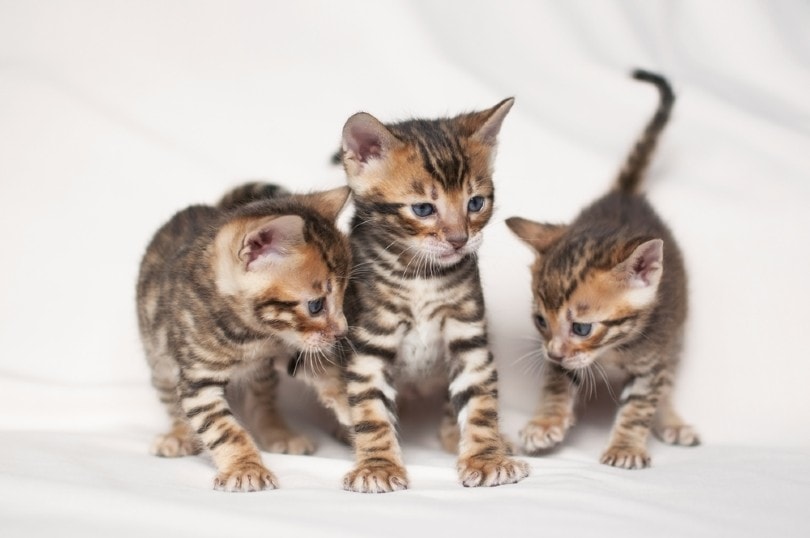
Suitable For:
Toygers are ideal for a wide variety of homes and lifestyles. Their sociable nature makes them great family pets, and their compatibility with other pets means they often fit in well in multi-pet households.
Their fearless attitude and playful nature can provide endless entertainment. They are even known to be friendly with strangers, so having guests over won’t be an issue with a Toyger in the house.
Whether you live in a bustling family environment or lead a more tranquil life and desire an affectionate companion, the Toyger could be the perfect pet for you. If you want a piece of the wild jungle in your living room without the wild behavior, the Toyger might just be the ticket.
- Friendly
- Low maintenance
- Playful
- May shed if not brushed enough
Bengal Overview
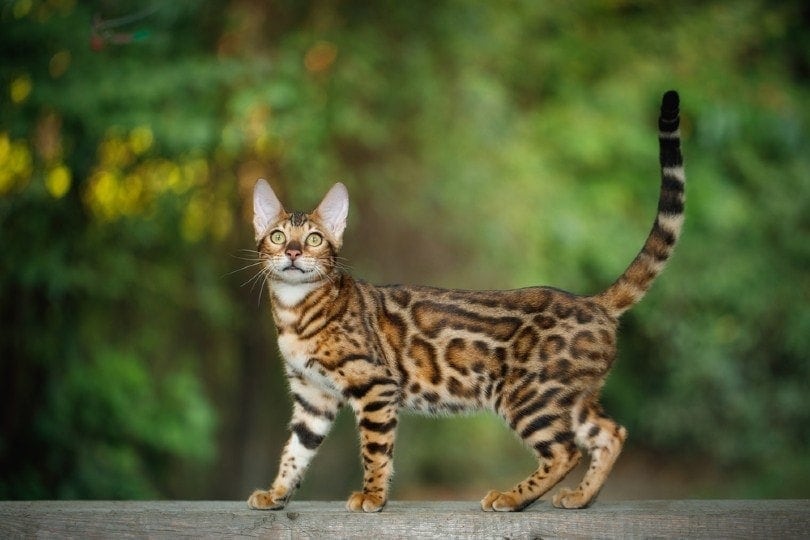
Personality / Character
If you’re seeking a cat with the spirit of a wild leopard and the independence of a house cat, look no further than the Bengal. Known for their high energy, intelligence, and wild heritage, these cats are never dull. Their love for hunting, running around, and even playing tricks can make them an engaging and entertaining pet.
But don’t be fooled by their playful antics; Bengals can be quite assertive, reflecting their wild ancestry. Their intriguing mix of wild instinct and domesticated manners can offer a unique companionship that’s not for the faint-hearted.
Exercise
Bengals are not the type of cats to laze around all day. These athletic felines need a lot of playtime and mental stimulation to keep their minds and bodies active. Reflecting their wild heritage, they enjoy activities that mimic hunting, like chasing toys and exploring.
Having space to roam and toys to pounce on can help keep a Bengal satisfied. If you’re someone who enjoys interactive play with your pet, a Bengal might just keep you on your toes!
Health & Care
Don’t let the Bengal’s thick and glossy coat intimidate you; they’re relatively low maintenance in the grooming department. Regular brushing will do, but the one area to pay particular attention to is their teeth.
Due to a higher risk of periodontal disease, regular teeth cleaning is essential. Besides this, a balanced diet and regular veterinary checkups are typically all you need to keep this wild-looking cat healthy and happy.
Breeding
The Bengal’s exotic appearance is no accident. This breed is a deliberate cross between a domestic cat and an Asian Leopard cat. The goal was to create a domesticated cat that retains the stunning wild appearance of a leopard.
Over time, and through selective breeding, the wild traits have been toned down, leading to a somewhat less wild but still spirited domesticated cat. Today, many Bengals are bred with other Bengals, contributing to their somewhat tamed nature, yet they still remain a bit harder to find than other breeds.
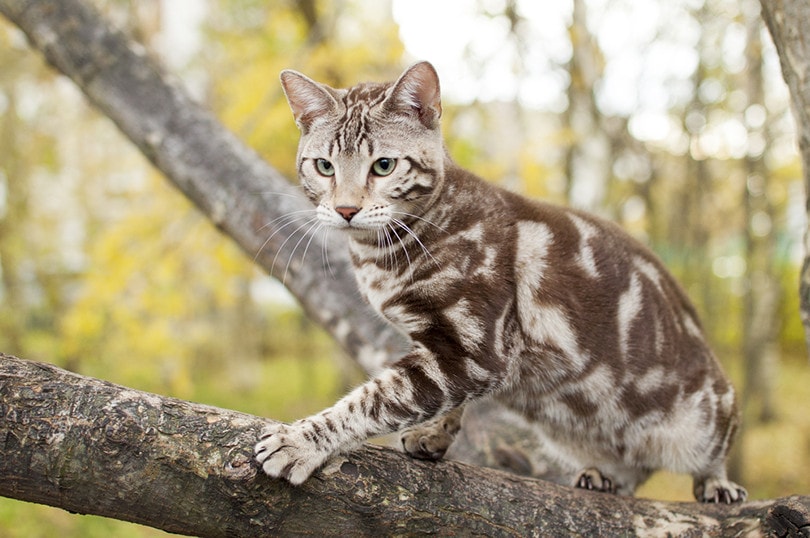
Suitable For:
Bengals are fascinating and can be a joy to own, but they might not be suitable for everyone. Their energetic and occasionally aggressive nature can be challenging to manage, especially in homes with small children or other pets.
They need an owner who understands and appreciates their wild side and can provide the appropriate environment for them to thrive. If you’re up for the challenge and want a pet that breaks the typical house cat mold, the Bengal could be a thrilling addition to your life. If a mini-leopard that loves to play sounds like your type of pet, the Bengal might be calling your name!
- Energetic
- Intelligent
- Unique appearance
- Can be aggressive with strangers
Comparing the Toyger and Bengal
While Toygers sport vertical stripes and standard colors, Bengals have spotted fur and come in different colors. Both have similar quality coats, but their physique and appearance vary significantly.
Both breeds are intelligent, playful, and fairly new inventions in the cat world. They share a similar charm, resembling tiny, wild cats, yet with distinct personalities and traits.
Which Breed Is Right for You?
Choosing between a Toyger and a Bengal depends on your lifestyle and what you seek in a pet. If a playful, friendly, and low-maintenance cat sounds appealing, the Toyger might be your match.
However, if you’re drawn to energy, intelligence, and a dash of wildness, the Bengal could be calling your name. Ultimately, knowing what each breed brings to the table helps you make an informed choice that fits perfectly with your life.
See Also:
- Bengal vs. Egyptian Mau: Differences Explained (With Pictures)
- Ocicat vs Bengal: The Differences (With Pictures)
Featured Image Credit: (L) stockelements, Shutterstock | (R) Seregraff, Shutterstock


